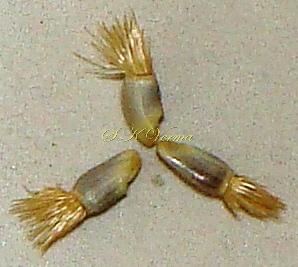CENTAUREA
Centaurea
L., Sp. Pl. 2: 909. 1753; Gen. Pl. ed. 5: 389. 1754; Shi & Martins, Fl. China @ eFloras.org 20-21: 191; Keil & Ochsmann, Fl. North Amer. @ eFloras.org 19-21: 52, 57, 58, 67, 83, 84, 96, 171, 172, 176, 177.
Herbs, annual, biennial or perennial. Leaves concolorous, proximal leaf blade margins often deeply lobed, distal often entire. Capitula discoid, disciform or radiant, heterogamous, 1- numerous or paniculate-corymbose or paniculate-racemose. Involucres cylindric or ovoid to hemispheric or bowl-shaped. Phyllaries many in 6-many series, unequal, imbricate, proximal part appressed, distal parts expanded into erect to spreading, usually dentate or fringed, linear to ovate appendages, spine tipped or spineless or scarious. Receptacle flat, epaleate, bristly. Florets few (10) to many. Outer florets sterile, enlarged and radiant or +/- as long as the inner ones, without staminodes, discoid, disciform or radiant. Inner florets fertile, bisexual. Corolla white to blue, pink, purple or yellow, bilateral or radial, often bent at junction of tubes and throats, lobes linear- oblong, acute. Anther bases tailed, apical appendages oblong. Style branches: fused portions with minutely hairy nodes, free portions minute. Cypselae +/- barrel-shaped, +/- compressed, smooth or ribbed, apical rim entire or denticulate or with fine 1-celled hairs, attachment scar lateral. Pappus usually present, of 2 types of elements: outer pappus elements bristle like (smooth or minutely barbed), usually in many series, rarely in 1 series, persistent or caducous, scrabid; inner pappus elements short, usually scale-like.
761 species
Centaurea cyanus
Centaurea cyanus
L., Sp. Pl. 2: 911. 1753; Fl. North Amer. @ eFloras.org 19-21: 184; Leucacantha cyanus (L.) Nieuw. & Lunell, Amer. Midl. Naturalist 5: 71.1917.
Annuals, 20-100 cm. Stems usually 1, erect, +/- openly branched distally, loosely tomentose. Leaves basal and cauline, sessile or shortly petiolate, +/- loosely grey-tomentose; Basal leaves up to 22 cm x 3 cm, linear-lanceolate, margins entire or with remote linear lobes, apices acute; Cauline leaves alternate, linear, usually not much smaller except near heads, usually entire. Capitula 1.5-3 cm across, radiant, in open, rounded or +/- flat-topped cymiform arrays, pedunculate. Involucres campanulate, 12-16 mm long. Phyllaries many, multiseriate, unequal, imbricate, green, ovate (outer) to oblong (inner), tomentose or becoming glabrous, white to dark brown or black, scarious, margin fringed with slender, +/- 1 mm long teeth. Receptacle epaleate, bristly. Florets 25-50, corollas blue (white to purple). Peripheral florets 10-20, sterile, neuter, enlarged and radiant, spreading, 20-25 mm, asymmetric funnel-shaped, limb with 4-6 mm long linear-lanceolate or deltate-lanceolate, acute lobes and proximal elongated tube-like part. Inner florets 15-30, 10-15 mm long, bisexual, fertile. Corolla white to blue, pink, purple; tube longer than funnelform throat, often bent at junction of tube and throat; limb 5-lobed, lobes linear-lanceolate or linear-oblong. Anther tube longer than corolla throat, anther bases tailed. Style branches: fused portions with minutely hairy nodes, free portions minute. Cypselae +/- barrel-shaped, +/- compressed, +/- smooth, apical rim entire, stramineous or pale blue, 4-5 mm long. Pappi of many unequal stiff bristles, 2-4 mm long.
Common Names: Cornflower, Bachelor’s Button, Garden Bluebottle, Bluebonnets, Blaver, Blue-Poppy, Thimbles, Brushes, Corn pinks, Witch’s bells, Hurtsickle
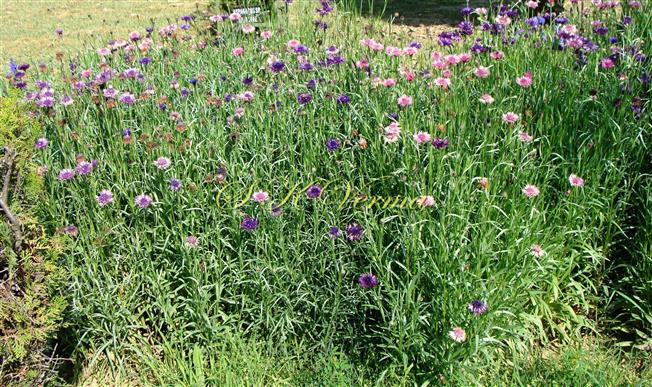
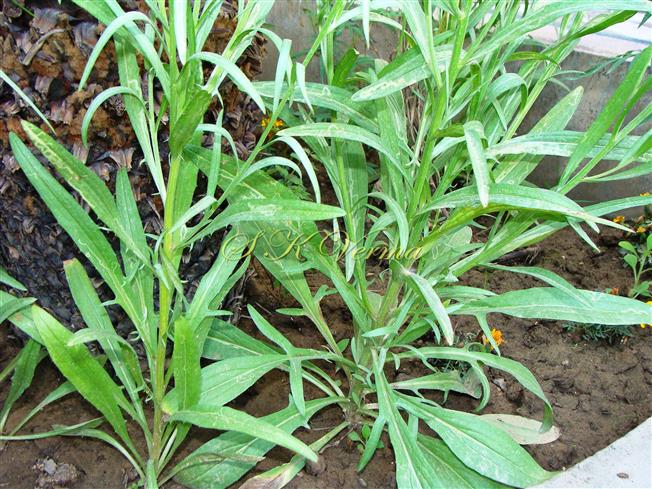

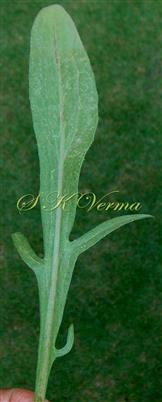
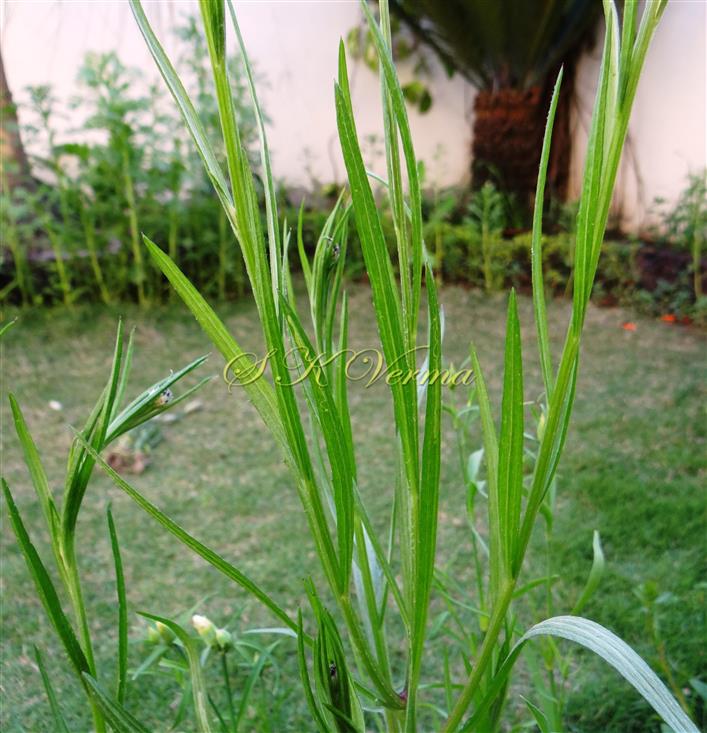
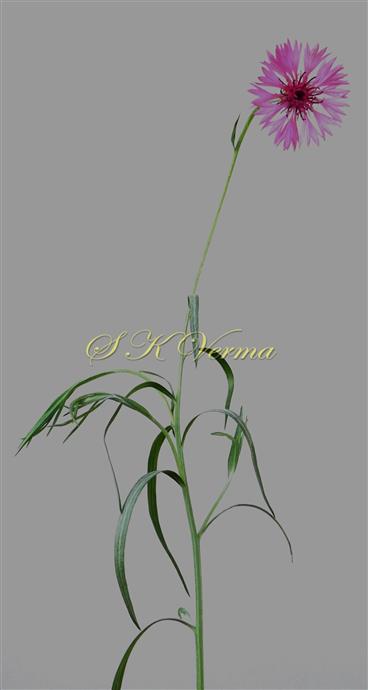
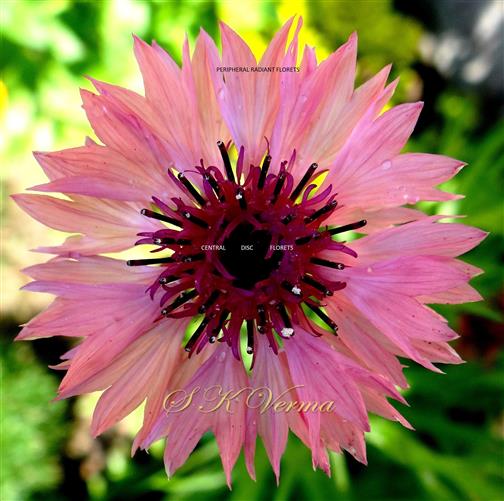
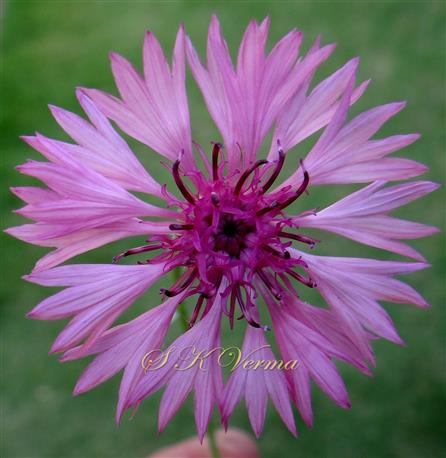
-DSC04845.jpg)
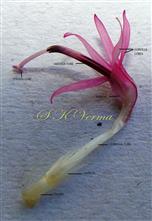
-DSC04863.jpg)
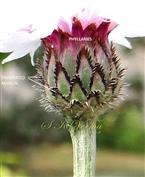
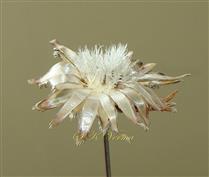
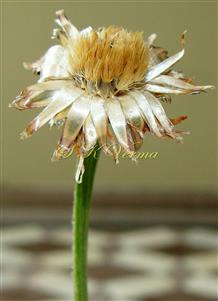










-DSC04845.jpg)

-DSC04863.jpg)



